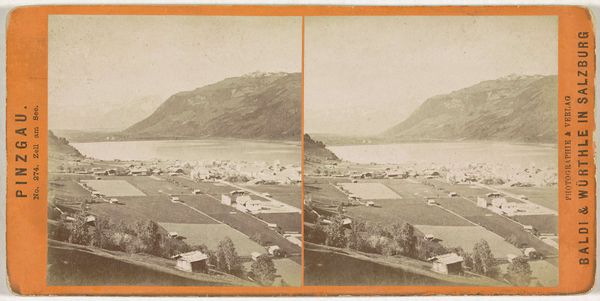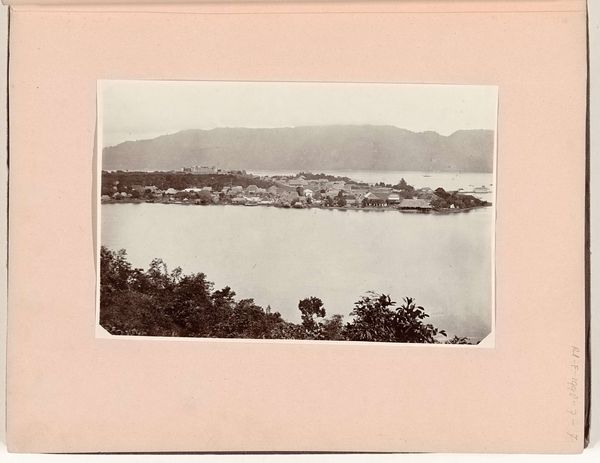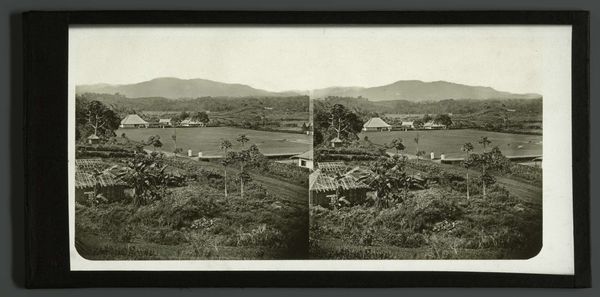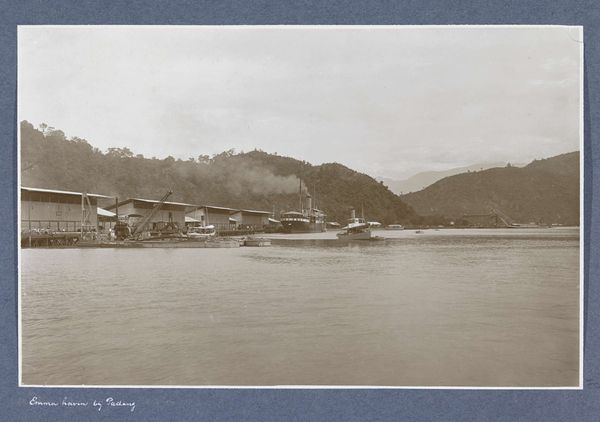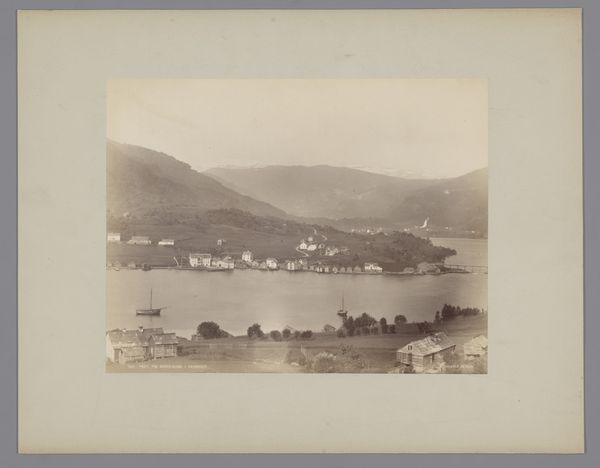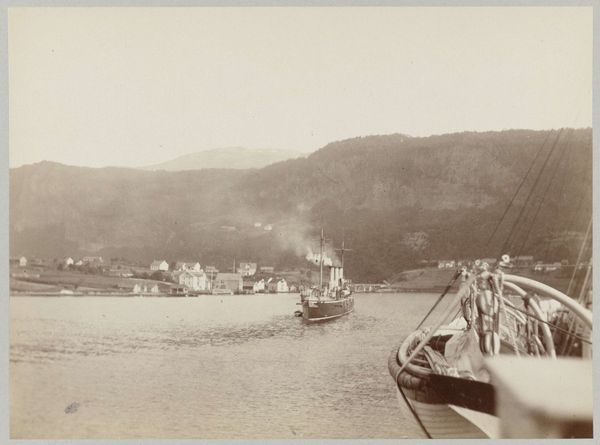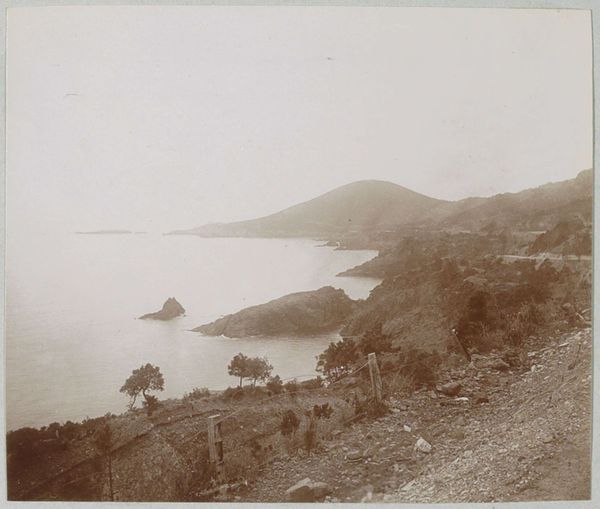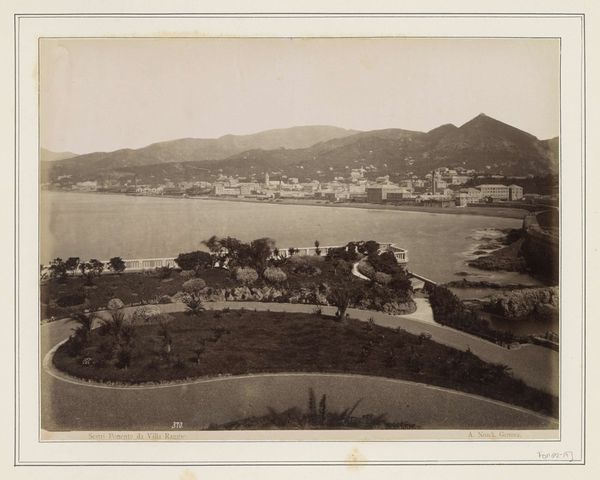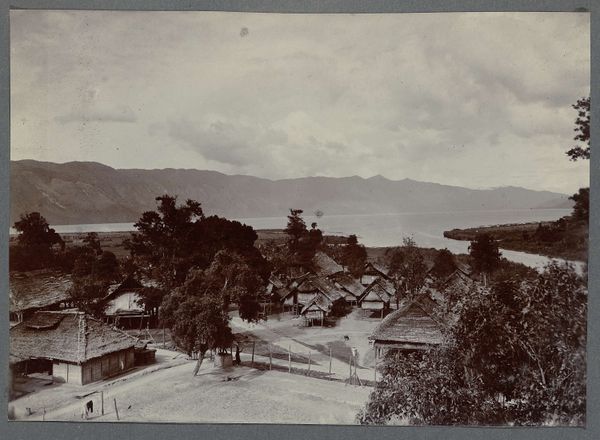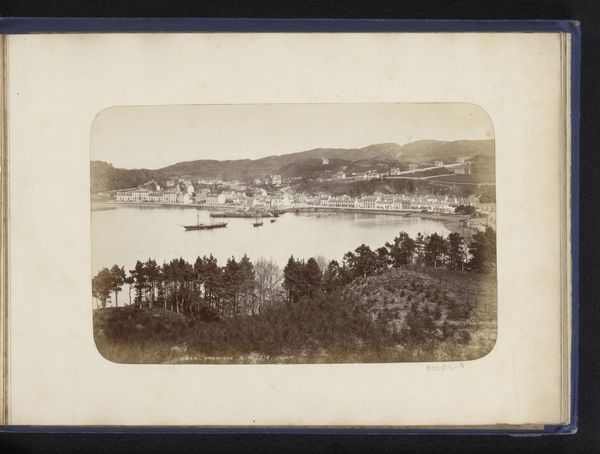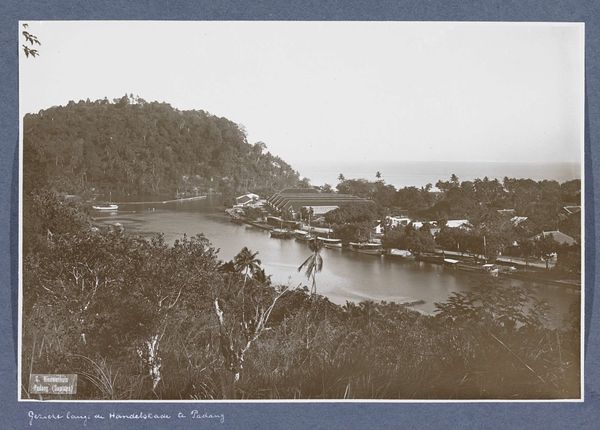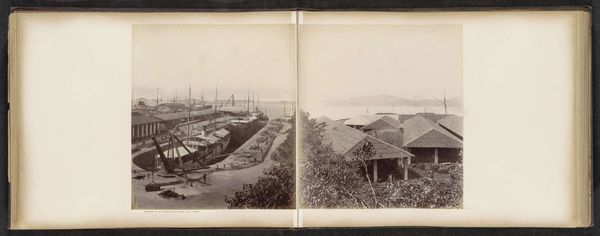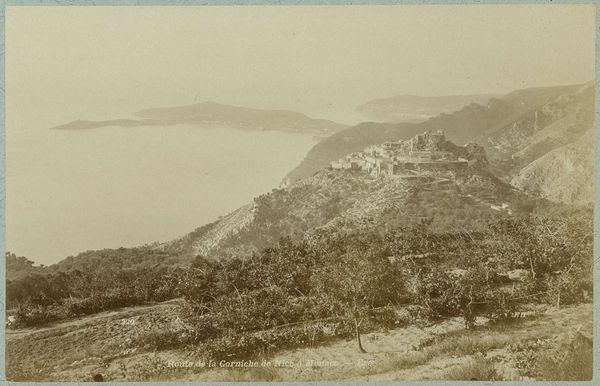
print, photography, albumen-print
# print
#
landscape
#
photography
#
orientalism
#
cityscape
#
mixed media
#
watercolor
#
albumen-print
Dimensions: height 106 mm, width 315 mm
Copyright: Rijks Museum: Open Domain
Editor: This is "Haven aan het meer Danau Lauttawar," or "Port on Lake Danau Lauttawar," a photographic print made sometime between 1903 and 1913. It’s quite a panoramic view. It shows buildings along the water’s edge with what looks like jungle and hills in the background. It feels very…staged. How do you see this image? Curator: Staged is a good observation. These albumen prints, especially panoramas like this, were popular during that period for projecting an image of colonial control and exploration. The carefully arranged composition directs our eye; note how the orderly structures in the foreground contrast with the 'untamed' landscape in the distance, really hammering home that dichotomy. Consider the context. Who do you think this imagery was trying to impress, and why? Editor: So it's like, selling an idea of taming the landscape? Impressing…investors back home, maybe? Or convincing potential settlers that this was a place where they could thrive? Curator: Exactly. These weren’t simply records, but tools. These kinds of images helped establish the photographer's reputation back home, proving that they've been able to reach far lands. How does knowing this change your impression of the scene now? Editor: It feels less…neutral. I mean, it felt romantic before, but now it feels like there is a propaganda element. Like it's hiding the complicated relationship between the locals and colonizers by glorifying one side. Curator: Precisely. These images are loaded with power dynamics. The very act of framing the shot is an act of claiming space and defining what’s valuable or, in this case, marketable about it. So, it really forces us to interrogate our assumptions about photographs and historical documents in general. Editor: I'll definitely never look at these old landscape photos the same way again. Thank you. Curator: Indeed, recognizing the photographer’s role and the motivations for creating such images reveals far more than the mere appearance of the depicted harbor scene. A wider lens through social and political contexts allows one to approach these images with new insights.
Comments
No comments
Be the first to comment and join the conversation on the ultimate creative platform.
